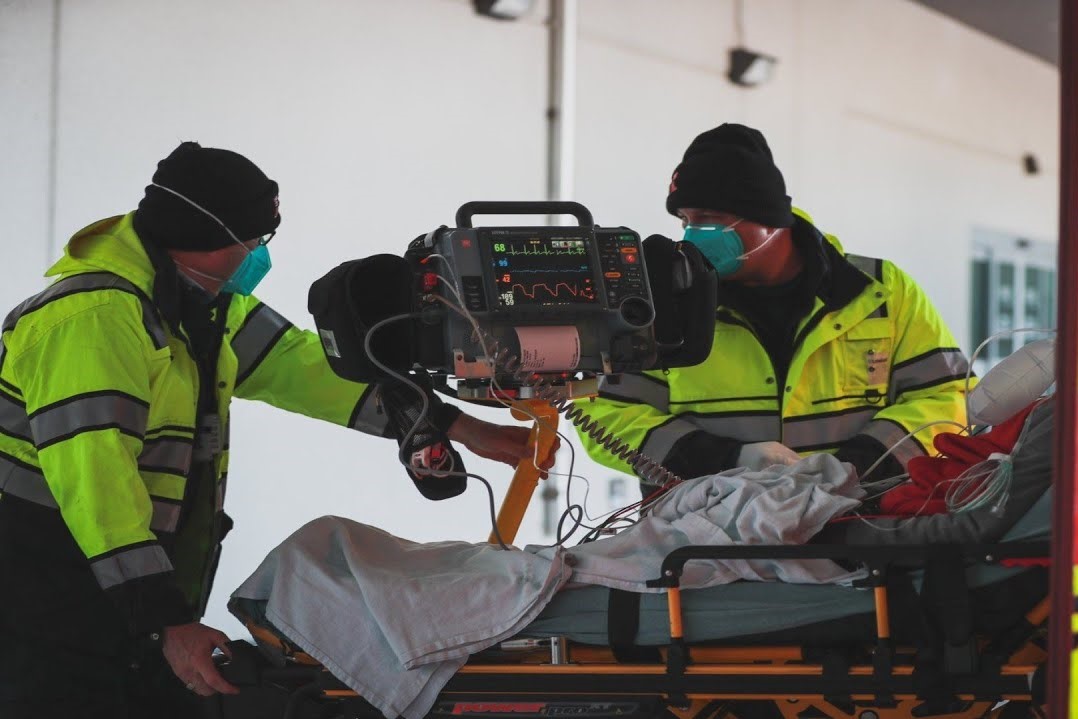
Identifying and Treating Carbon Monoxide Poisoning
Carbon monoxide (CO) poisoning occurs when high levels of carbon monoxide in the air cause a buildup in a person’s bloodstream
When these high levels are present, carbon monoxide replaces the oxygen in red blood cells, effectively suffocating the patient
Unfortunately, CO poisoning is difficult to diagnose. Symptoms often mirror other illnesses, and a traditional pulse oximeter can’t determine if a patient has carbon monoxide poisoning due to readings likely indicating normal oxygen saturation levels.
However, newer testing devices can measure the percentage of CO in the blood.
If your team has access to one, look for carboxyhemoglobin levels that exceed 5% for non-smokers or 10% for smokers, as these percentages indicate some level of Carbon Monoxide poisoning
Difficult as it may be to diagnose, it’s still important to know the signs of carbon monoxide poisoning so you can react quickly. Symptoms may include:
- Headache
- Feeling physically weak
- Dizziness
- Nausea or vomiting
- Shortness of breath
- Confusion
- Blurred vision
- Loss of consciousness
- Chest pain
- Pale, discolored skin
- Seizure
Treating Carbon Monoxide Poisoning
Carbon monoxide poisoning can be fatal or cause permanent damage to vital organs.
Because of this, a high degree of suspicion is necessary, and if CO poisoning is suspected or confirmed, responders must take immediate action.
Before beginning treatment, a patient must be moved to a location away from the potential source of the carbon monoxide for both their and your safety.
From here, begin administering 100% oxygen via a non-rebreather mask.
This significantly shortens the half-life of carbon monoxide, causing it to leave the patient’s bloodstream quicker.
As nausea and vomiting are two of the most common symptoms associated with CO poisoning, you should be prepared to treat a contaminated airway through suctioning.
A suction tip with a large inner diameter, such as SSCOR’s HI-D Suction Tip, will allow for airway contaminants to be cleared quickly, leading to a shorter amount of time the patient is unoxygenated.
Additionally, a patient with CO poisoning may suffer a seizure
Because of this, knowing how to properly manage the airway during a seizure is important for achieving a positive patient outcome.
In these cases, position a patient to protect the airway and use bag-valve ventilation if respiratory depression is present.
Following this, administer anti-seizure medications if necessary, evaluate a patient for seizure-related injuries, such as head injuries or broken teeth, and be prepared to suction the patient if the airway becomes obstructed.
Patients with severe CO poisoning may suffer aspiration and require intubation. If intubation is necessary, the SALAD (Suction Assisted Laryngoscopy and Airway Decontamination) technique should be used to clear the airway and visualize the vocal cords.
While compatible with virtually any suction device, the SALAD technique is most effective with the rigid SSCOR DuCanto Catheter, which is uniquely designed to quickly and effectively carry out SALAD.
Following necessary treatment, maintain oxygen administration and transport a patient to a hospital as quickly as possible.
You may want to consider a hospital with a hyperbaric oxygen chamber, especially if the patient is unconscious, as this treatment further accelerates the process of carbon monoxide leaving the bloodstream.
Carbon monoxide poisoning: Be Prepared
CO poisoning can have high morbidity and mortality rates if not treated quickly.
Because of this, maintain a high degree of suspicion and, if possible, make use of equipment that can determine carbon monoxide levels in a patient.
While carbon monoxide poisoning is difficult to diagnose and a serious medical threat, removing the patient from the scene, oxygenating the patient and being prepared to deal with a difficult airway increases the likelihood of a positive outcome.
Read Also:
Emergency Live Even More…Live: Download The New Free App Of Your Newspaper For IOS And Android
Irritant Gas Inhalation Injury: Symptoms, Diagnosis And Patient Care
Respiratory Arrest: How Should It Be Addressed? An Overview
Smoke Inhalation: Diagnosis And Patient Treatment
Emergency Rescue: Comparative Strategies To Exclude Pulmonary Embolism
Pneumothorax And Pneumomediastinum: Rescuing The Patient With Pulmonary Barotrauma
Barotrauma Of The Ear And Nose: What It Is And How To Diagnose It
Decompression Sickness: What It Is And What It Causes
Seasickness Or Car Sickness: What Causes Motion Sickness?


